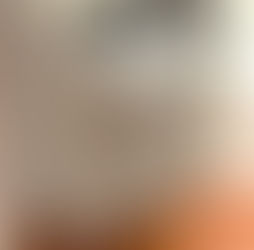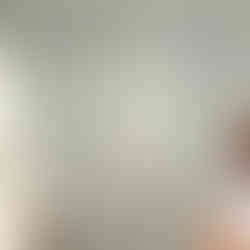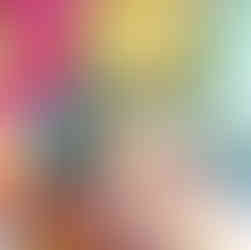Decoupage Over Glass? Yes, You Can!
- Lori Siegel

- Apr 8, 2023
- 3 min read
Since I'm not the neatest painter, my paint cans end up looking less than tidy, so I was in desperate need of a cabinet to conceal the mess.
Although I had a cabinet that was the right size, it had glass doors, which defeated the purpose of hiding my messy cans. After some research, I discovered that decoupaging over glass was a possibility. I was a bit apprehensive at first, imagining myself having to use a razor blade to remove the paper, but since I didn't want to buy another cabinet, I decided to give it a try.
This is the cabinet I was talking about. It is great, but everything is visible on the inside. The first step was painting the entire piece, including the glass, with primer (all products used will be listed at the end of the post). It not only created a smooth surface for the decoupage to adhere to but will prevent the decoupage over the glass from having a different tone than the rest of the piece.

This decoupage paper is fantastic. The colors and brightness are perfect for holding my chalk paint.
To start, I spread wallpaper adhesive on the surface and then placed the decoupage paper over it. Working from the top down, I used a large chip brush to smooth out any wrinkles and gently press the paper into the crevices. A helpful tip is to apply the wallpaper paste sparingly and work in small sections; I tore the paper a few times because it was too saturated. Not to worry, though. I bought a smaller version of the same decoupage paper and used it to fix the tears. I simply cut out matching pieces, decoupaged them on, and you wouldn't have known the rips were ever there.

It took quite a while to finish, but I like the end product. As you can see, it does cover the entire piece. To remedy this, I gathered all my tools: chalk paint, acrylic paints, various brushes, and a picture of the decoupage paper to reference. Using these tools, I am going to attempt to extend the decoupage design further onto the cabinet. Wish me luck!
To begin, I added paint to the base of the vase. After completing this step, I proceeded to mix my paints to match the colors in the decoupage paper. It's important to make enough of the color mixture at once, as trying to recreate it can be difficult. To blend the colors, I used a brush and ragging technique.
I knew I needed to keep going, so I chose a chalk paint color and went for it! I used a spray bottle with water to thin out the paint, stepping back and adding more color where it was needed. To give it a three-dimensional look, I cut pieces of the smaller replica decoupage paper and added it to the composition. I wanted it to look like flowers had fallen from the bouquet.
I continued on the bottom until I was satisfied then started adding color to the top. I color matched what was on the paper and brought it upward. This continued for hours I finally had to get up shut the door and walk away.

After a few days, I came back and finished the piece. It was not as difficult as I thought it would be but very time-consuming.
When (not if) I do this again, I will have to pace myself. Yeah, right! Who am I kidding?
If you enjoyed this post, please give it a "like" and subscribe to receive new posts as they are created.
Products used:























































Comments